| Columns Retired Columns & Blogs |
Another great piece written by JS.
The amplifier measurements here were made using the tubes JS found to be the best-sounding: Western Electric 300B, GE 5692, and RCA 5R4GB.
The Jadis SE300B was warmed up for 1 hour at 1/3 of its rated maximum power of 10W. Nothing unusual was observed in this pretest; the 300B ran typically hot for a tube amplifier. Its input impedance measured a high 135k ohms. The output impedance was 2.5 ohms at 1kHz, 2.7 ohms at 20kHz, and 0.76 ohms at 20Hz. This amplifier's frequency response will be very dependent on the loudspeaker load. Voltage gain into 8 ohms was 24.3dB. Unweighted S/N measured 83dB over a bandwidth of 22Hz–22kHz (ref. 1W into 8 ohms), 81dB over a wider 10Hz–500kHz bandwidth, and 86dB A-weighted. DC offset was unmeasurable.
Fig.1 shows the Jadis 300B's frequency response. Note the expanded scale. The SE300B has a significant rolloff at the top-end and a severe rolloff in the bass—the worst we've yet seen in an amplifier intended for full-range use. With our simulated real-world load, clearly audible variations in the response are added to already-compromised performance—these variations will vary for different loudspeakers, but should be audible on most. Fig.2 shows the 1kHz squarewave response. It indicates a fast risetime, but with noticeable but moderately damped ringing on the leading edge and a downsloping top reflecting the LF rolloff. (The slightly jagged top is an artifact of the digital oscilloscope used to obtain these curves; it doesn't appear on an analog oscilloscope.) Fig.3 shows the 10kHz waveform, with a rather slow risetime, the rounded leading edge typical of an amplifier with limited HF extension, and the same oscillation as in fig.2 visible on the top and bottom of the waveform.
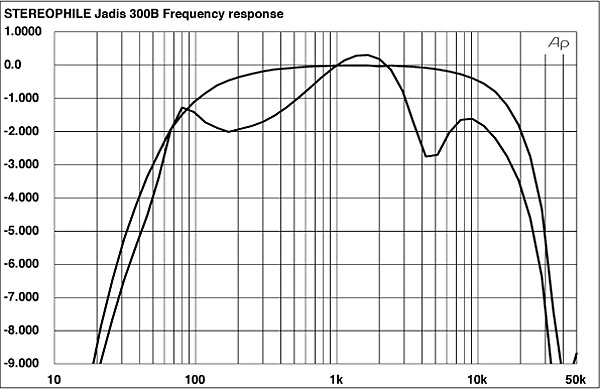
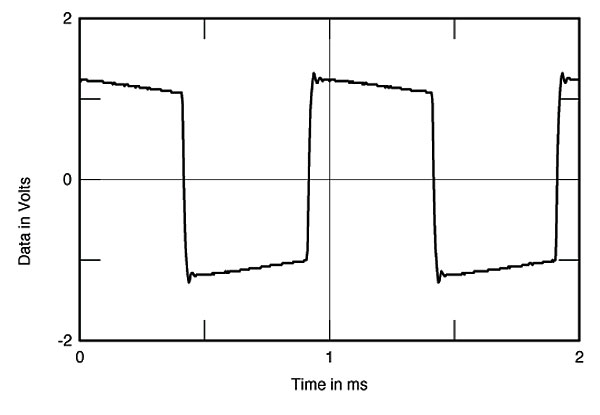
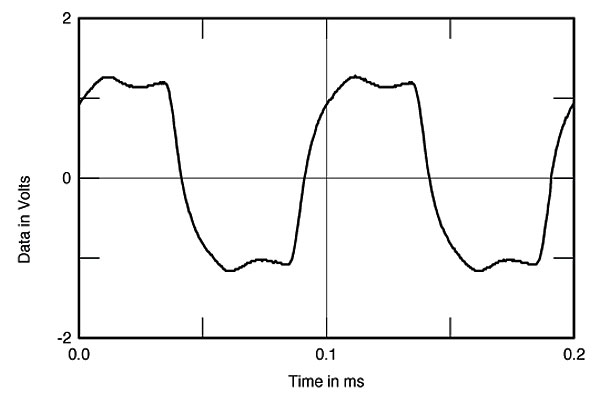
The Jadis's THD+noise vs frequency performance at 1kHz is plotted in fig.4. Except for the rise at low frequencies, this isn't unexpected distortion performance for this sort of design. The very high level of distortion into 2 ohms indicates that the Jadis cannot be recommended for use into low impedances.
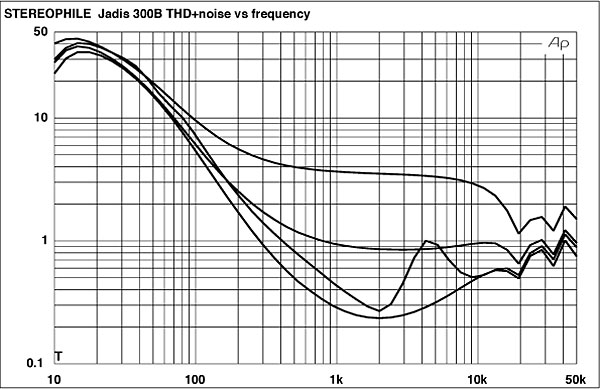
The waveform of the distortion into a 4 ohm load at 1kHz is shown in fig.5. It's heavily second harmonic, with a trace of irregularity indicating higher order components at a very low levels. The distortion waveform into 2 ohms is similar, as is the 8 ohm result (neither shown), though the latter has slightly lower high-order content.
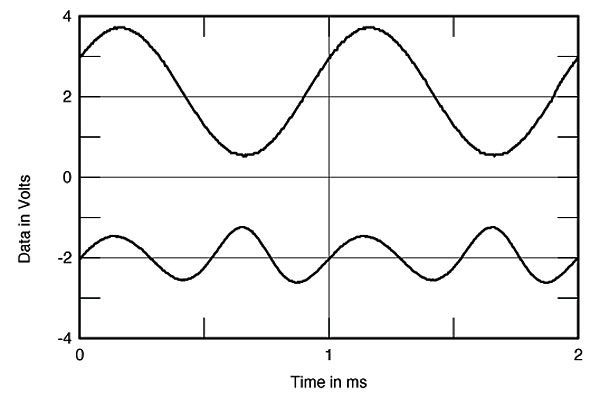
Fig.6 shows the spectrum of the Jadis's output in response to a 50Hz input, taken at a 1.6W output into a 4 ohm load. The distortion here is very high. The distortion here is at –14.3dB (about 20%) at 100Hz (2nd harmonic) and –23.4dB (about 7%) at 150Hz (third harmonic). Into our simulated real load (not shown), the distortion was very slightly lower, but not significantly so.
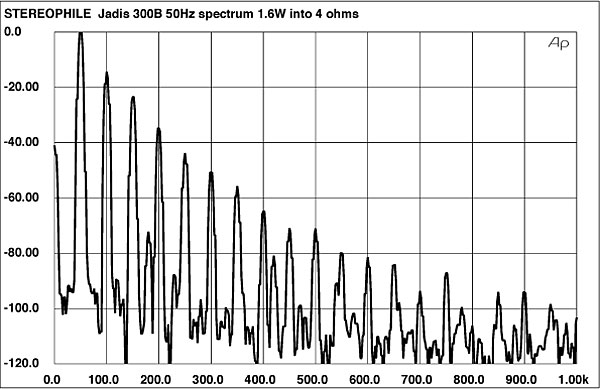
Feeding a combined 19kHz+20kHz signal into the Jadis results in the spectral content shown in fig.7 for 4.17W into 4 ohms. Somewhat higher distortion was obtained at 3.3W into 8 ohms (not shown), mainly the 1kHz difference component, which lay at –32.6dB or about 2.5%). This is a fair result for this type of design, though we're talking very low power here: –40dB (1% distortion+noise) at 1kHz and approximately the same at 18kHz and 21kHz. The remaining artifacts are below –80dB (0.01%), which is actually good.
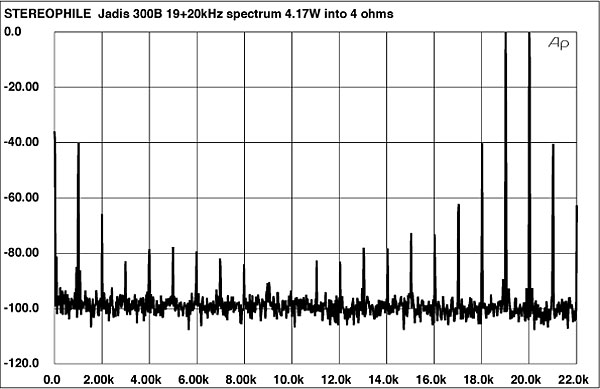
The THD+noise vs level measurements (fig.8) indicate that 8 ohms is about the optimum load for this amplifier. I've also plotted the curve for a 16 ohm load; it's similar to the 8 ohm result, though with less overall power output. [Note that for output powers below 1W into 8 ohms and above, the distortion content is actually respectably low.—Ed.] The clipping levels are shown in Table 1. We present the values here for both the 1% and the 3% levels of THD+noise.—Thomas J. Norton
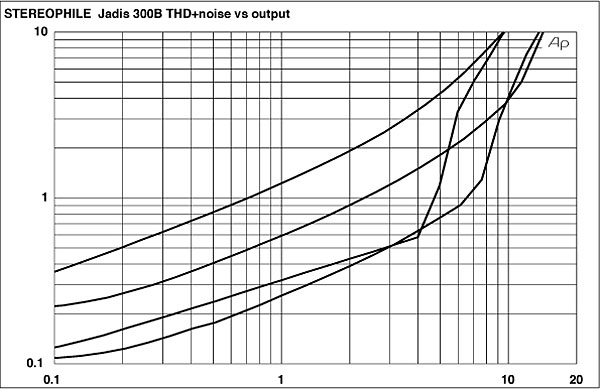
Table 1 Jadis SE300B Discrete Clipping Levels (1% & 3% THD+Noise at 1kHz)
| LOAD | Driven | |
| ohms | W (dBW) (1%) | W (dBW) (3%) |
| 8 | 7.5 (8.7) | 9.7 (9.9) |
| line | 119V | 118V |
| 4 | 2.58 (1.1) | 8.4 (6.2) |
| line | 119V | 119V |
| 2 | 0.78 (–7) | 3.65 (–0.4) |
| line | 119V | 119V |

Another great piece written by JS.

It seems to me it would have more validity if you had someone like Roger Waters, or Neil Young saying that it sounds like he intended when he created the original in the studio in the first place. Otherwise what do you have?